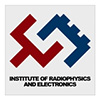 |
|
| Founded year: | 1960 |
| Director: |
Candidate of Phys.-Math. Sci. Tigran V. Zakaryan |
| Address: | Alikhanian brs. 1, Ashtarak, 0204, Armenia |
| Phone number: | (+374 232) 32789 |
| Fax: | (+374 232) 33770 |
| E-mail: | office {[ at ]} irphe.am |
| Website: | http://www.irphe.am/ |
|
Main Fields of Activity
Development of radio physical methods and microwave units and systems for remote sensing of the Earth and atmosphere, medical diagnostics and analysis of material characteristics. Development of new functional elements and metal (dielectric) waveguide structures in the THz frequency band. Main Results
Generation and frequency-conversion of millimeter waves by high-temperature superconducting Josephson structures was detected and analyzed in IRPhE. New functional elements based on dielectric image guides have been developed for low-noise receivers in millimeter and submillimeter wavebands; microwave radiometer systems have been developed, manufactured and successfully used on board of MIR Space Station and OCEAN-0 satellite for remote sensing of the Earth; millimeter-wave transceiver systems have been developed for indoor communication, and as a local Internet link; medical apparatus ARTSAKH has been developed for treatment of certain diseases through "acupunctural points" exposed to weak microwaves; light effect on diamond crystal plasticity has been studied and HF transistor using diamond powder substrate has been developed; phenomenological theory of the time-dependent Ginzburg-Landau Equations has been developed; semiconductor heterojunctions, nInSb-nGaAs, were groun by laser epitaxy method. For the first time, sign reversal of photo-sensitivity characteristic was revealed and physical model of the phenomenon was given; Pb1-xSnxTe single crystals of various composition were grown and analyzed, as perspective materials for IR and millimeter-wave detectors; new oxide ceramic material has been developed, possessing high thermal-electric efficiency, as a perspective element for the Peltier-effect coolers; nonlinear optical effects and storage properties of low-dimensional semiconductor systems (quantum dots and porous Si) have been treated; theory of fast particle transition through thin conductor, dielectric or plasma layers has been developed. series of absolute angle encoders, varying in size and accuracy, has been manufactured and used for orientation of platforms beasing instruments on board of MIR Space Station, as well as in robotics and machine industry; an alarm system using combination of capacitance sensors, microphones and control means has been developed for guarding of territorics. International Activity
IRPhE is engaged in the ISTC project "Development of Highly Sensitive Microwave Receivers for Radio Astronomy, Meteorology and Earthquake Forecasting"; Researches are carried out under INTAS-Open program on "Current Transport and HF Interactions in High Tc Superconducting Multi-Junctions"; IRPhE specialists are engaged in the NATO "Science for Peace" project "Super-Sensitive High Tc Superconducting Multi-Junction Josephson Devices for Environmental Investigation and Bio magnetic Applications". |
General Page - About Academy - Divisions - Organizations - Members - Contact us - Structure - Presidium Members
Documents - Innovation Proposals - Publications - Funds - Conferences - Competitions - International cooperation
Youth programs - Photogallery - Videogallery - Web Resources Other Academies - "Gitutyun" newspaper - "In the World of Science" Journal
Publications in Press - Notices - Anniversaries - Universities - News - Scientific Results - Scientists of the Diaspora
Young Scientist Tribune - Our Honored Figures - Announcements - Sitemap - Search